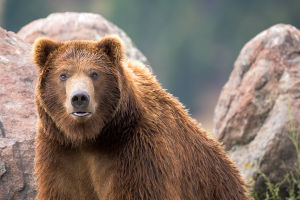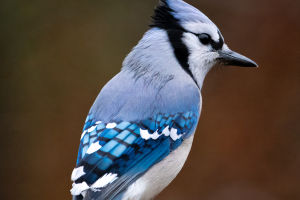Bighorn sheep are a majestic species of wild sheep that inhabit mountainous regions of North America. They are named for the large, curved horns that are unique to adult males. Females also have horns, but they are shorter and less curved.
Bighorn sheep have long legs and are incredibly agile, with excellent climbing abilities that help them navigate steep and rocky terrain with ease.
These sheep are known for their sharp eyesight, which helps them detect predators from afar. They are social animals that live in herds, usually consisting of ten or more individuals led by one or a few adult males.
These males are often found perched on high rocks, keeping watch for any potential threats to the group. When danger is detected, the males will sound the alarm, and the herd will quickly flee along steep rocky terrain to safety.
Bighorn sheep have stout and sturdy body, which is ideal for living in mountainous regions. They prefer to inhabit rocky and dry mountainous areas, as well as open, dry deserts and prairies. The species is divided into seven subspecies, with five living in desert areas, and two living in wilderness regions.
The mountain bighorn sheep is the largest and most numerous of these subspecies, and they make their home in remote wilderness areas.
Bighorn sheep have the largest horns of any sheep species, with adult males boasting horns that can grow up to 1.5 meters long. The horns are used by males to defend themselves against predators and to compete with other males for territory, status, and mates.
The pair of large horns is a sign of power and dominance, but unfortunately, they also make bighorn sheep a prime target for hunters.
Hunting has significantly impacted bighorn sheep populations, with adult males being the most sought-after targets due to their impressive horns.
Over-hunting has led to a decline in adult male populations, which has resulted in a decrease in genetic diversity and the passing on of genes for smaller horns to future generations.
This decline in genetic diversity has the potential to negatively impact the species as a whole, leading to weaker and less resilient populations in the future.
Conservation efforts have been put in place to help protect bighorn sheep populations. Hunting regulations have been implemented to limit the number of adult males that can be hunted each year. In addition, habitat protection measures have been put in place to ensure that bighorn sheep have access to the rocky and dry mountainous regions that they prefer.
In the winter months, bighorn sheep move to lower valleys in search of food due to heavy snowfall in the mountainous regions. They are mostly active in the early morning and evening when they forage for food.
Their diet consists mainly of grasses, but they also eat shrubs, cacti, and other plants that grow in their habitat.
Bighorn sheep are a fascinating species that have adapted well to living in mountainous regions. Their impressive horns and sharp eyesight make them a symbol of power and dominance, but unfortunately, these traits have also made them a prime target for hunters.
Conservation efforts are necessary to ensure that future generations of bighorn sheep continue to thrive in their natural habitat.


